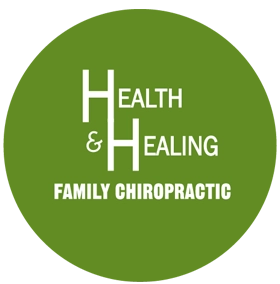SoftWave Therapy For Joint Pain Relief Explained in Andover MN
SoftWave Therapy for Joint Pain Relief Explained in Andover MN

If you're one of the many people suffering from persistent joint pain, you're likely exploring every possible treatment option to find lasting relief. Whether it's from arthritis, injury, or overuse, joint discomfort can limit mobility, reduce quality of life, and affect your ability to enjoy daily activities. One emerging, non-invasive treatment that’s generating interest among both patients and healthcare providers is SoftWave Therapy. Contact our Andover MN chiropractic clinic today to learn more.
SoftWave Therapy is a cutting-edge regenerative treatment that uses acoustic wave technology to stimulate healing in musculoskeletal tissues. For those struggling with knee, shoulder, hip, or other joint pain, this therapy offers a promising alternative to medication, injections, or surgery. In this article, we’ll explore how SoftWave Therapy works, what to expect during treatment, and whether it might be the right choice for your joint health journey. If you're searching for a modern, drug-free option to manage joint pain, this guide will help you understand the benefits and practical applications of SoftWave Therapy.
How SoftWave Therapy Works In Andover MN
SoftWave Therapy, also known as extracorporeal shockwave therapy (ESWT), is a non-invasive treatment that uses high-energy acoustic waves to stimulate natural healing processes within the body. These acoustic waves are delivered to the affected joint area through a specialized handheld device applied to the skin. The treatment stimulates circulation, reduces inflammation, and activates the body’s own repair mechanisms at the cellular level.
The acoustic waves penetrate deep into the joint tissues, reaching damaged ligaments, tendons, and cartilage that often contribute to chronic pain. By increasing blood flow and promoting the recruitment of stem cells, SoftWave Therapy enhances tissue regeneration and accelerates recovery without the need for medication or surgery.
This therapy is particularly effective for joints because it targets the dense, connective tissues that are often difficult to heal. Moreover, SoftWave Therapy can break down calcifications and scar tissue that limit movement and cause discomfort. Because it doesn’t rely on chemicals or invasive procedures, patients are able to maintain an active lifestyle during the course of treatment.
For individuals with ongoing joint pain, understanding how SoftWave Therapy works is key to making informed treatment choices. It represents a promising, science-backed solution that works with the body rather than against it—something that sets it apart from many conventional pain management options.
Conditions SoftWave Therapy Can Treat
SoftWave Therapy has demonstrated effectiveness across a wide range of joint-related conditions. It is frequently used for chronic pain that stems from wear and tear, inflammation, or soft tissue injuries around major joints like the knee, hip, shoulder, and elbow.
One of the most common conditions treated with SoftWave Therapy is osteoarthritis, particularly in the knees and hips. The therapy reduces inflammation and helps rebuild cartilage over time, improving joint function and reducing stiffness. It’s also useful for tendonitis, bursitis, and other overuse injuries commonly found in athletes or individuals with repetitive strain issues.
People with rotator cuff injuries, tennis elbow, and patellar tendinopathy often see significant improvement with SoftWave Therapy, as it addresses both the pain and the root cause of tissue damage. Even in cases of post-surgical joint pain or scar tissue build-up, this therapy can enhance healing and mobility.
Additionally, SoftWave Therapy is showing promise in treating joint pain associated with autoimmune conditions like rheumatoid arthritis. While it doesn't cure the underlying disease, it can offer symptom relief by improving local tissue health and circulation.
For those struggling with persistent joint pain that hasn’t responded well to traditional approaches, SoftWave Therapy offers a new avenue for treatment—one that targets healing from the inside out.
Key Benefits of SoftWave Therapy for Joint Pain
One of the most appealing aspects of SoftWave Therapy is its ability to relieve joint pain without the use of medications or surgical interventions. This non-invasive approach is ideal for individuals seeking a holistic, long-term solution to discomfort and inflammation.
Patients often report a reduction in pain after just one session, though a full course of treatments usually offers the most durable results. The therapy stimulates the body’s natural repair systems, which leads to tissue regeneration rather than just masking the symptoms. Over time, this can result in improved joint mobility and functionality.
Another major benefit is the minimal downtime. Unlike surgery or injections that may require recovery periods, SoftWave Therapy allows patients to continue their normal routines without interruption. There's also no risk of dependency, as there might be with painkillers or corticosteroids.
The precision of the therapy means it can be customized to the specific joint and severity of the issue, ensuring targeted relief. For many, this personalized approach makes SoftWave Therapy a better experience than the one-size-fits-all nature of traditional treatments.
Ultimately, SoftWave Therapy empowers individuals to take control of their joint health through a safe, effective, and scientifically grounded method that supports long-term healing.
What to Expect During a SoftWave Therapy Session
Understanding what happens during a SoftWave Therapy session can ease concerns and help patients feel more confident about trying this treatment. Each session typically lasts between 10 to 20 minutes, depending on the size and location of the joint being treated.
The therapist or clinician begins by applying a gel to the targeted area to help the acoustic waves travel efficiently through the skin and into the tissues. A handheld device is then used to deliver the waves in a series of pulses. While the sensation can be intense—often described as a tingling or tapping feeling—it’s generally well-tolerated and doesn’t require anesthesia.
Most patients experience some degree of immediate relief, although the primary benefits become more apparent over the course of several sessions. A typical treatment plan involves one to two sessions per week for about 3 to 6 weeks, depending on the condition and response to therapy.
After each session, there might be mild soreness or redness in the treated area, but this usually subsides within a few hours. Because there’s no surgical incision or drug intervention, there’s virtually no recovery time needed.
SoftWave Therapy sessions are quick, straightforward, and designed to fit easily into a busy schedule. For people with joint pain, the process is an accessible and low-risk option that supports consistent improvement without interrupting daily life.
Comparing SoftWave Therapy to Other Joint Pain Treatments
SoftWave Therapy offers a unique alternative to conventional joint pain treatments. Here's how it compares to other common methods:
- Medication: SoftWave Therapy addresses the root cause of joint pain, while medications typically only provide temporary symptom relief and can lead to long-term side effects.
- Corticosteroid Injections: These may offer faster relief but can weaken tissues over time. SoftWave stimulates healing without the risks of tissue damage.
- Physical Therapy: While helpful for improving mobility and strength, physical therapy can be slow to show results. Combining it with SoftWave Therapy may enhance outcomes.
- Surgery: Surgery carries risks such as infection, extended recovery time, and potential complications. SoftWave Therapy is non-invasive and requires no downtime.
- Alternative Therapies (e.g., acupuncture): These methods may offer pain relief but often lack the regenerative focus that SoftWave Therapy provides.
By targeting tissue repair and inflammation, SoftWave Therapy stands out as a scientifically supported, regenerative option for managing joint pain without the drawbacks of more invasive or temporary solutions.
Who is an Ideal Candidate for SoftWave Therapy?
Not everyone is suited for every treatment, but many people with joint pain can benefit from SoftWave Therapy. You might be an ideal candidate if:
- You suffer from chronic joint pain due to arthritis, injury, or overuse.
- Conservative treatments like rest, ice, or medications haven’t provided sufficient relief.
- You’re looking for a non-invasive alternative to surgery or injections.
- You’re physically active and want to recover faster from joint-related injuries.
- You want a drug-free option for long-term pain management.
- You’re dealing with soft tissue injuries that contribute to joint discomfort.
- You’re seeking a treatment that promotes healing rather than just symptom suppression.
SoftWave Therapy is generally safe for most people, though it may not be recommended for individuals with certain medical implants or bleeding disorders. A qualified healthcare provider can assess whether this treatment is right for your specific condition and health history.
If you're living with persistent joint pain and are seeking a safe, non-invasive, and scientifically advanced solution, SoftWave Therapy could be the answer you've been looking for. This cutting-edge approach helps your body heal from within—without relying on medications, injections, or surgery.
To explore whether SoftWave Therapy is right for you, schedule a consultation with Dr. Timothy Erickson at Symmetry Chiropractic & Acupuncture in Naperville, Illinois. Dr. Erickson and his team are experienced in using SoftWave Therapy to help patients regain mobility, reduce pain, and get back to the activities they love.
Don't wait—take the next step toward lasting joint pain relief with Symmetry Chiropractic & Acupuncture today.
Monday
9:00am - 12:00pm
3:00pm - 6:00pm
Tuesday
3:00pm - 6:00pm
Wednesday
9:00am - 12:00pm
3:00pm - 6:00pm
Thursday
9:00am - 12:00pm
3:00pm - 6:00pm
Friday
9:00am - 12:00pm
Saturday & Sunday
Closed
Monday
9:00am - 7:30pm
Tuesday
6:15pm - 7:30pm
Wednesday
8:00am - 6:00pm
Thursday
8:00am - 2:30pm
6:15pm - 7:30pm
Friday
8:00am - 1:20pm
Saturday & Sunday
Closed
Health & Healing Family Chiropractic
2705 Bunker Lake Blvd NW #100
Andover, MN 55304
P: (763) 323-0061
F: (763) 754-9756


